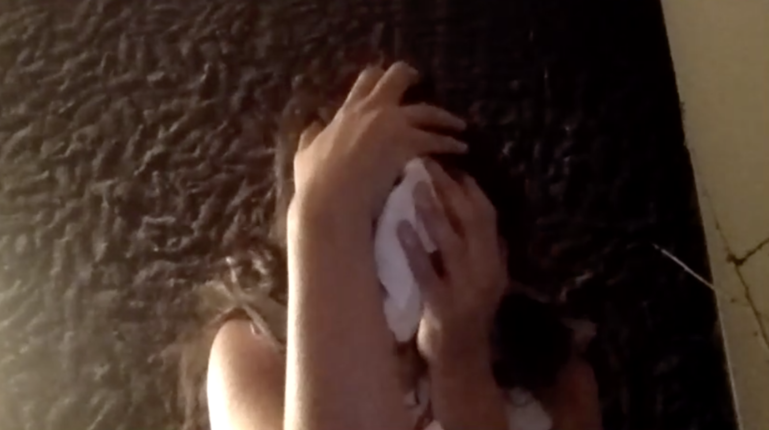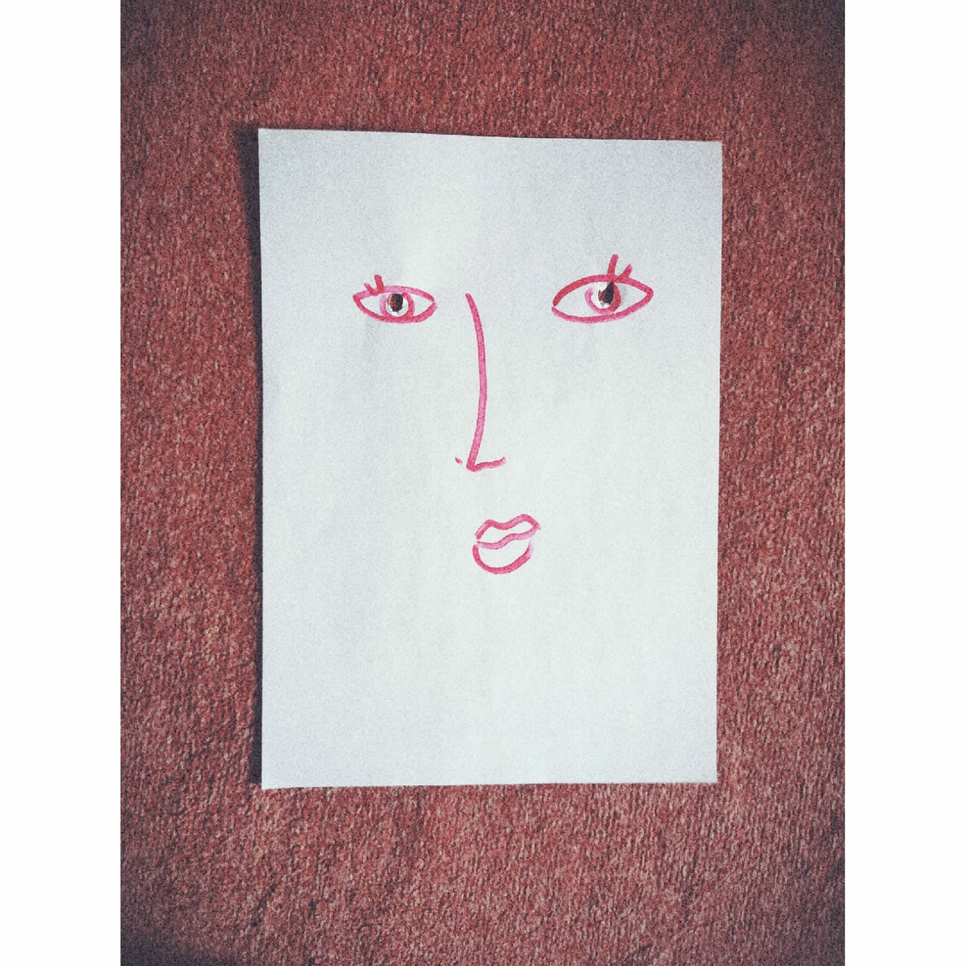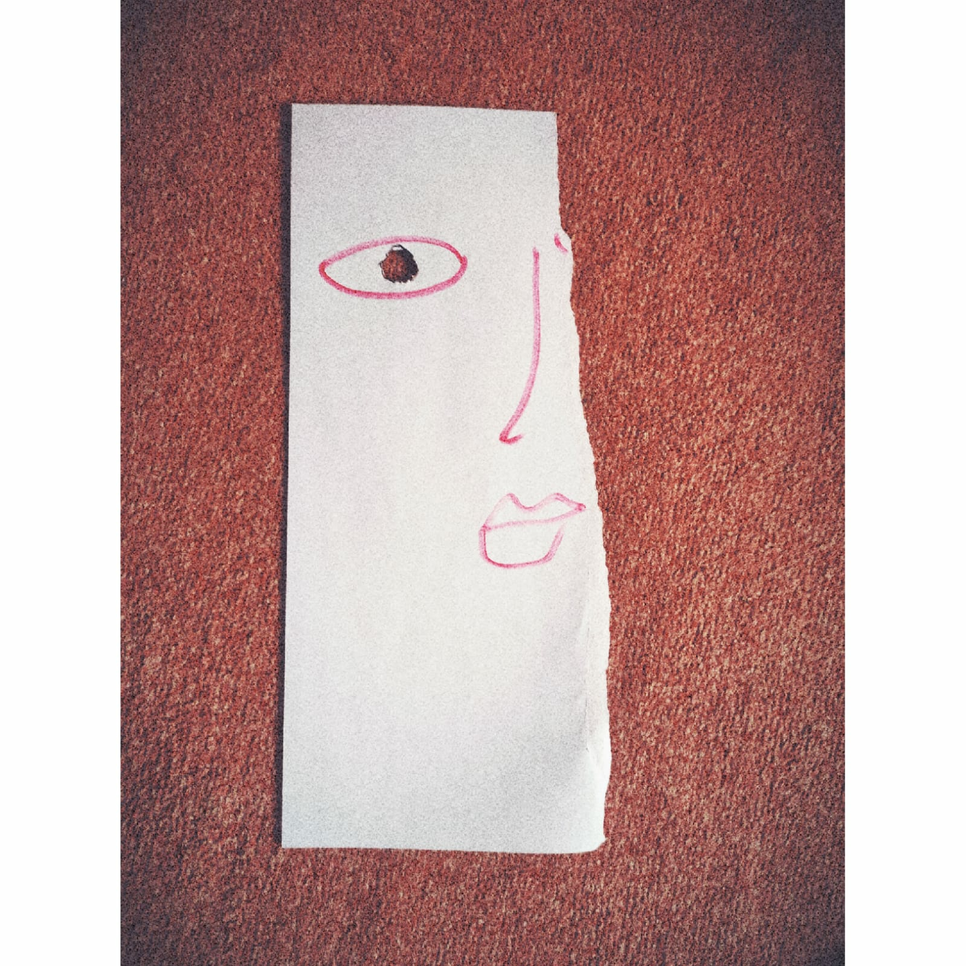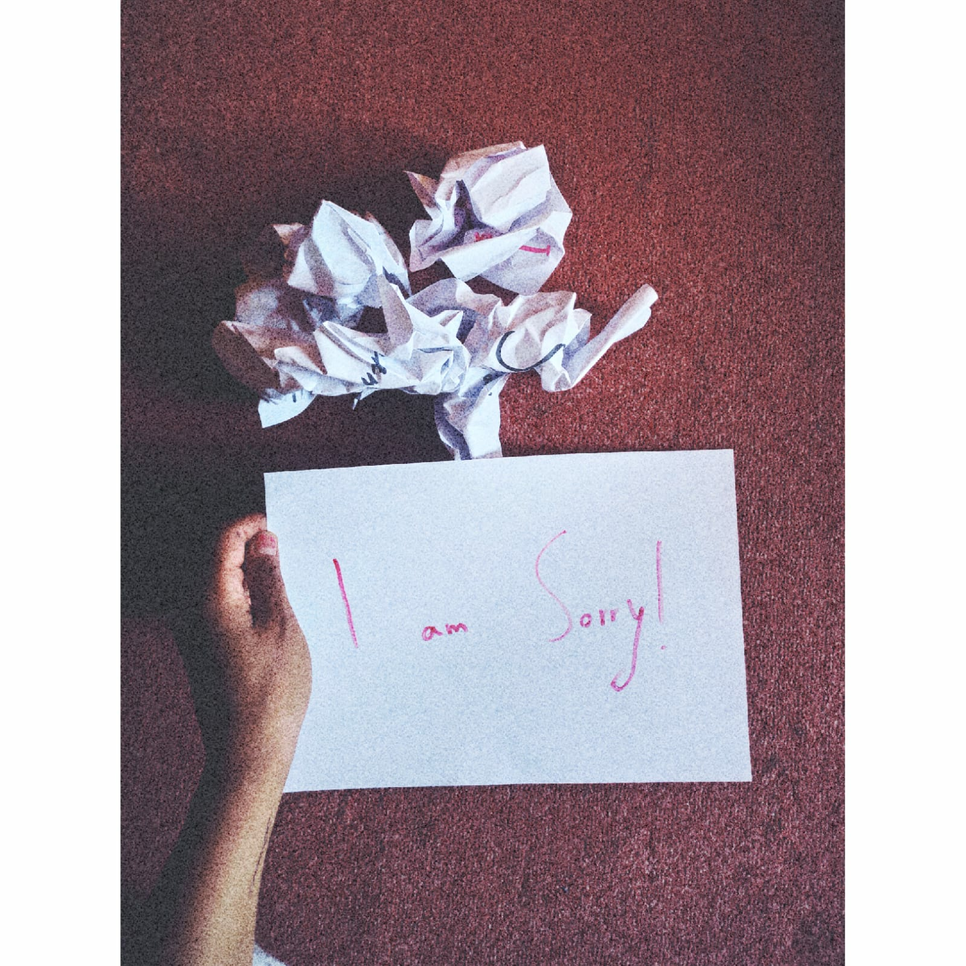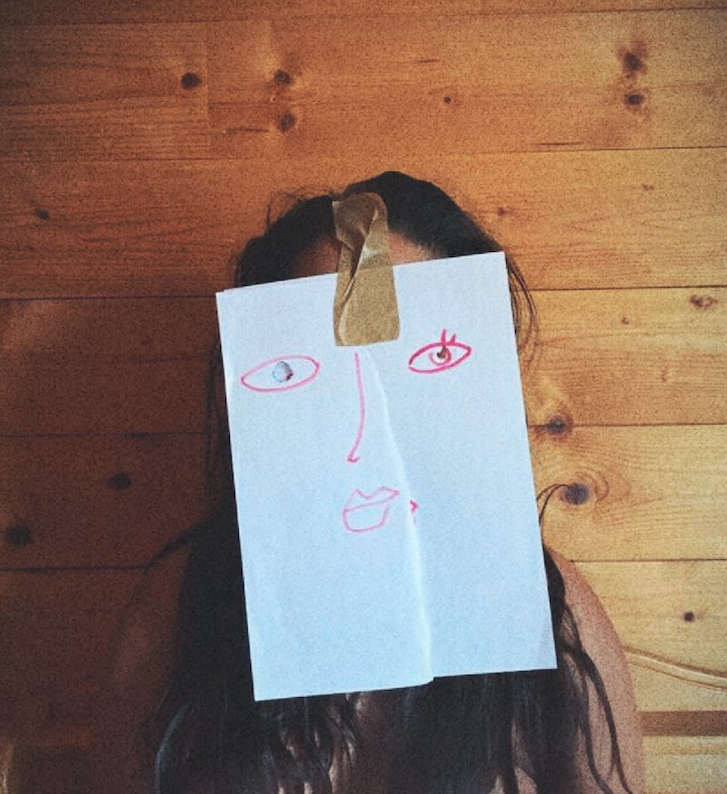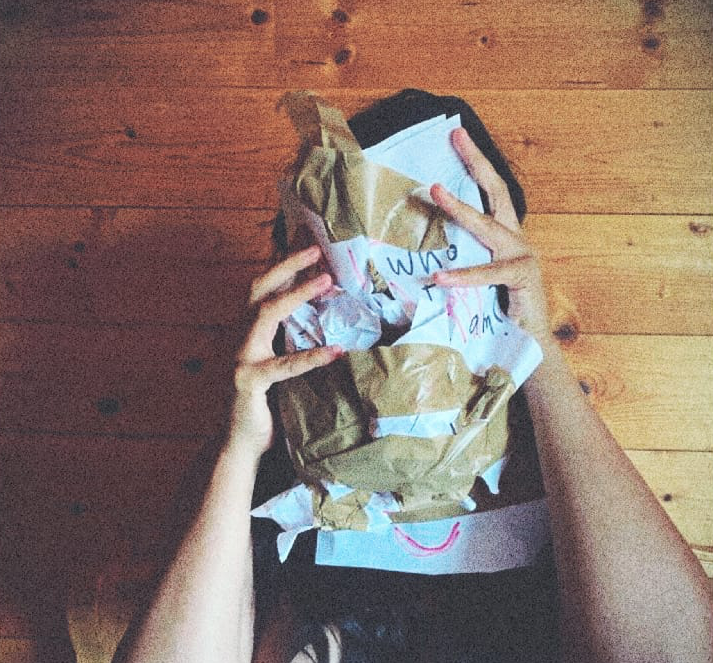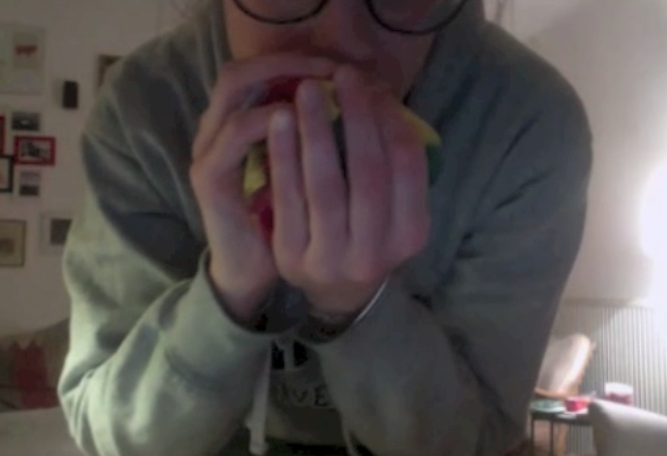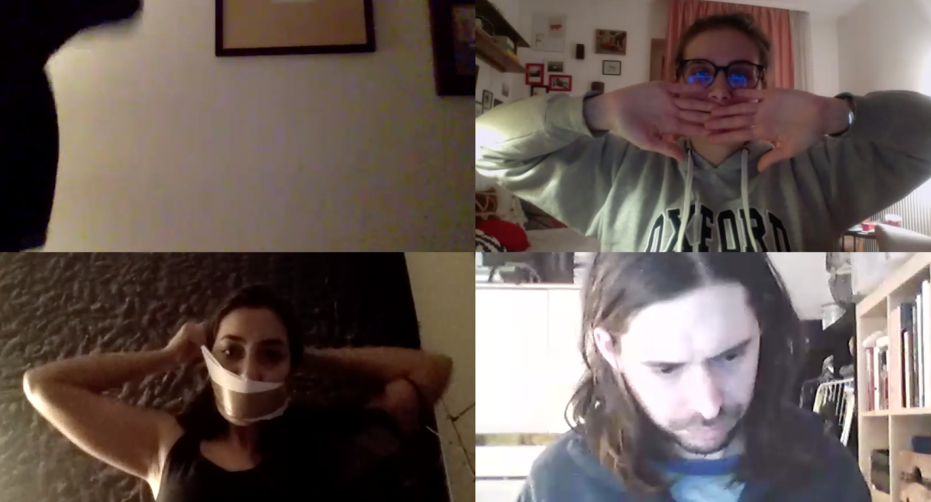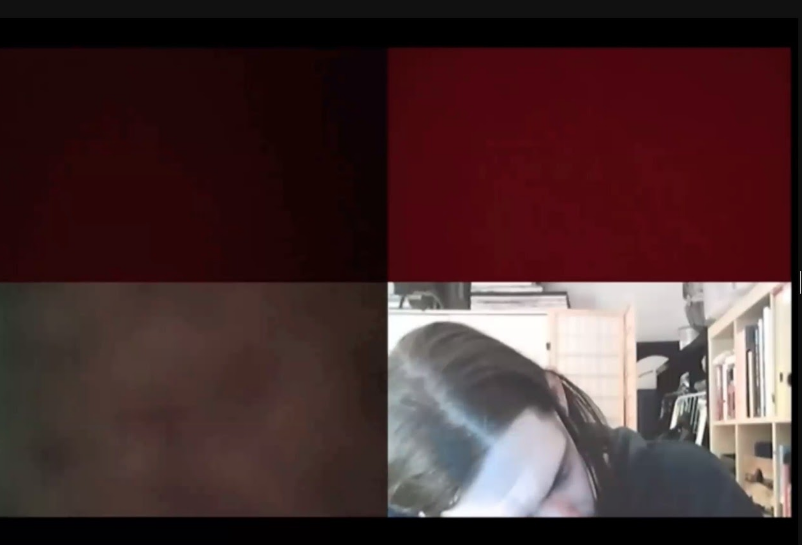-
How would I make myself seen/ or not seen?
-
What rooms do I own?
-
What rooms do I enter/ do not enter?
-
How do I notice that I enter that room?
-
How do I notice that I cannot enter that room?
-
Where do I feel that in my body, my mind, my abilities?
In this section, we would like to present our mode of working, our methodology as well as the research process. This process stretched over approximately a year (academic year 2020/21) and was spread out over five dense workshop-like working periods. Each workshop had a different main focus and was designed to deepen our autosociobiographical exploration with different artistic methods (object work and improvisation – including photos, videos but also clothes, day-to-day objects and memorabilia; body work; creative writing; conversation/ dialogue with questionnaire prompts; photo improvisation and video improvisation). The research process cumulated in a one hour performance that was held over zoom and was also a "non-performance" – as no audience was present. A five minutes condensate of this performance was shown and discussed at the 12th SAR conference in Vienna that was held online due to the ongoing Covid-19 pandemic.
We chose this form of non-performance to have a secure space where all the fragments from our autosociobiographical exploration could be pieced together and confronted by each other to weave a cartography of autosociobiographical exploration prompted by the emotion shame. Still, the performance setting as well as the commitment to one prolonged session without withdrawing oneself from the ongoing process was crucial to concretize our findings and to find the "substrate" of our work together. This non-performance in highly individual and specifically dependant on the people we work with and the time we met. These fluid characteristics and the changeability of fragments that come to light make – in an ongoing process – the different layers of autosociobiography visible. We are multifaceted beings with multifaceted sociobiographies that interact in multifaceted ways with their surroundings. It needs a semi-controlled setting to account for these aspects and to be true to the artistic as well as the research side of this endeavour.
Following, we will explain and present in more detail our multi-layered way of working during the exploration process before we will then focus on the final non-performance.
In our third workshop, the only one that was conducted live in the group (of course taking Covid-19 precautionary measures), we focused on body work and memories that are non-verbally stored in our bodies.
We based our work on an exploration technique developed by Wolfram in her work as theatre artist. It is based on the works of Shdanoff, Meisner and Chechov, which are body works used in actors’ training for connecting body movements/ gestures with emotional memory (also cf. Lepecki 2010). Wolfram has worked extensively with that body technique as well as the "absurd" questionnaire described in workshop 4 to explore biographies in .EVOLve and developed seven plays in that fashion.
As stated above, the aim of the body work is to access and trigger non-verbally stored memories and beliefs about one own's sociobiography. It is central to the artistic research process as it allows to explore areas of biographical memories that are not accessible via non-arts-based research but central to understand one's sociobiography as a whole and its interconnected sets of beliefs, memories and their re-tellings which build and form a sociobiography.
As it would exceed the scope of this exposition by far, we will outline only the most central aspects and techniques used. As it is a body based work, the written form can only be seen as an approximation to the work we have done in the workshop-room.
Our body work started with centering and a so-called body warm up which separates the private from the working mode and also connects the working self with the group setting.
The warm up focuses on all body parts and introduces different levels of speed and intensity to move different body parts in circles (1 arm, both arms, 1 leg, both legs and central part of the body). The aim is to literally warm up the body but also to access habitual gestures and movements that can offer insights into non-verbally stored memories.
The technique of inner monologue was introduced along with the warm up. It is a form of active meditation that uses the sentence "Now I am aware of - name it and let it go" to ground the body in the present moment and to be aware of its corporeality. The technique at the same time allows one to be able to name what is happening with(in) the body and to "track" it which is especially important if used in a research setting.
After that we moved to the 5x5 model that connects all five senses (taste, smell, touch, looking and hearing) and its connected memory rooms with five layers of perception and so-called memory space. These layers are 1. within my body on a tactile, non-emotion level (feeling of warmth, cold, feeling of clothes on the body, etc.); 2. within my body on an emotional level (anger, boredom, indifference, nervousness, etc.) in combination with the locus of the emotion; 3. within the room that I am in at the very moment, which also included the other group members present in the room; 4. what is outside of this room and within a near past and future (What happened just before I entered this room and came here? What will happen after I have left this room?), 5. what is up in space or deep in the earth? This creates a space using imaginery images to help access deep underlaying core beliefs.
Via a guided exploration by Wolfram all of these layers and senses (5x5) were connected and with the above mentioned centering technique "Now I am aware of - name it - let it go" explored to access non-verbally stored memories and beliefs.
Again, the group setting was central to this exercises, especially while working with the body. Bodies react to bodies. We gather and build memories in contact with other beings. The limits of one own's and another being's body are crucial for the creation of the self that we can re-tell and describe to others. To research these elements we need the other's physical presence to re-trace and trigger our experiences and memories as well as having an outside eye to one's own body movements, experiences and the way we un/consciously present our body in reaction to others.
These body research exercises were followed by several rounds of reflection and discussion within the group in the same way of working as in the second workshop. In that form we allow our exploration(s) to last and to find a form in which we can communicate our process, especially for a research project.
The workshop was concluded by an "imaginary" journey through different rooms guided by Wolfram that led our bodies into different imaginary rooms (f.ex. a forest, a cathedral, a very small room that narrows while walking through it, our childhood room or a white open field). While accessing these imaginary rooms, the body moves in the real room and adapts with its movements to the changed environement. In connection with the "Now I am aware of" technique, changes in body posture, gesture but also in our abilites to be aware of the surroundings (the real and the imaginary ones) and in the ability to react to others in the room, were noted and explored.
Third workshop: body, gestures and body memories
Corporeal exploration of non-verbally stored biographical elements alone and in the group
For all workshops
ROUNDS OF REFLECTION
After each of these different forms of exploring, several rounds of reflection followed focusing on the questions:
-
Describe what you have seen/ experienced in as much detail as you can.
-
What was the one thing that was the most prominent/ moving/ most important one for you personally?
-
What would you like to know more about?
-
How would you link it with your own experience?
-
What is missing?
In our second workshop, conducted online via skype/ zoom, we started to use the group setting in the (auto)sociobiographical exploration process.
We gathered the material we had worked on in the first step and brought them into the group, to allow these personal carriers of memories and moments to be confronted and challenged by each other.
Parenthesis:
The collective is a mode of working essential to our form of arts-based research. Rooted in the work project co-lead Barbara Wolfram was doing with her theatre company .EVOLve over the last eight years, she started to cherish and use the collective work in a group on many levels.
First, it brings together, confronts and reveals the “self-evident”. The membership to a certain social class is self-evident, "normal", as long as not confronted with members of another social stratum. We need the deviance to our norm to uncover the conscious process of creating this norm.
Secondly, the collective gives courage, we dare together, we witness – and this is a very important word – the testimony of each other’s being and each other’s lives. We witness each other in the process of daring, so therefore we also dare. The collective encourages to look at our experiences of shame by sharing the process and multiplying the energy involved.
To address the specific field of the social stratum in relation to the emotion shame, we must stress that we used our shared understanding of social class – as explained before – as a filter, a guide to un/consciously access our memories specifically related to social class.
The presentation of the material in the group of four was followed by several rounds of reflection where we described what we heard and saw, how it resonated with our own sociobiography, what was triggered by certain objects but also by very specific moments, that could also include the changeability of objects, the way an object was handeld, the way an object was presented to the group but also in the formal context of the online format where we had a laptop screen that framed the way of presentation and possesed its own qualitites for presentation like moving an object in and out of the screen, close and far to the camera or to cover the camera in a way that alters the whole perception of the framing like a filter. In that process, we explored our sociobiographies step by step and revealed more and more layers, we entered more and more rooms, but also realized that there are some closed room that we could not or did not want to enter at that moment. We focused on the "not-wanting" with as much attention as the "wanting" as we find the "not-being-able-to" and the "not-wanting" being connected and maybe being very interesting crossing points of social class and perceived social stratum.
In that process we then also tried to name these liminal experiences but in this first step the focus was much more on the process, the exploration and also on getting to know the group dynamics and each other as well as each other's exploration process and sociobiography.
Additionally, we worked with a biographical questionnaire to get to know the "facts" of our sociobiography and to understand how each other describes themself and tells their own sociobiography.
Second workshop: objects in the group & biographical questionnaire
object presentation and re-telling in the group
factual work on sociobiographies via biographical questionnaire
First workshop period: objects & memorabilia
object gathering, object improvisation, object re-telling
In our first workshop period, we started by recounting and gathering memories that we could access easily, prompted by the works of Éribon and Ernaux.
We set out to collect different materials, photos, objects, videos, written texts, gestures, feelings, movements, memorabilia, very concrete memories of moments where we felt shame.
We started to explore these diverse objects in a multilayered fashion prompted by the questions you see in the red box.
Our goal was to form a cartography of objects in relation to the emotion shame that led to memories connected with the perception of socal class but could also include other experiences of shame as well. The aim was to lay out the personal field of sociobiography but not limiting our exploration process by focusing too early on the intersection of shame and social class.
This first step was conducted by each group member alone but with the goal to choose some objects to bring into the group setting in our second workshop.
Fourth workshop: questionnaire for the unconscious elements
working with an "absurd" questionnaire alone
presenting & discussing the answers in the group
In our fourth workshop, this time back to skype/ zoom, we focused on the unconscious parts of sociobiography from a slightly different angle as in the previous workshops, this time based on creative thinking with our heads and minds in contrast to creative thinking with our body.
For that matter we have worked with a seemingly "absurd" questionnaire that invites answers of different forms – be it written, be it spoken, be it drawn or danced or expressed by gestures or any other form that we felt appropriate to the question. We also put a special focus on questions where we did not want to give an answer. Unanswered questions would be presented and discussed as well as answered questions.
The questionnaire consisted of around 30 questions that can be seen as "absurd" questions all kicked off by the main theme, in our case shame and social class.
Questions such as “What is a cup?”, “I am …. in that room.”, “KniveForkSpoonkniveforkspoon”, "____________" or simply “Shoes?” were included in that questionnaire.
You will find parts of the questionnaire in the red box on the side. When you start to engage with the questions, choose three or four that you specifically feel like you want to answer or that you specifically feel you do not want to answer. Take your time with the questions, take your time with the answers. Carry them around for a while and let them work within you. There might be one very fast answer, that is wonderful. But there might also be an aswer lingering in the corners of your consciousness. Give yourself time and room for that answer to come up. You can draw or dance or gesture or sing the answer, you can of course also write it down. Whatever feels right for the question and the answer.
The second part of the workshop was again to reconnect with the group.
In a dialogue setting every one presented as many questions as she or he wanted. The other group members engaged in active listening and reflection processes to provide an outside eye in order to understand the presented fragments of each person's sociobiography better. We described what we heard, what we did understand and how we understood it, what we did not understand, what questions we had and what moved us.
In several rounds of telling and re-telling we explored our sociobiographies and dived deeper into what makes up our sociobiography and how we personally express it and relate to it.
Working with objects: memorabilia/photos/ videos
- Find any object/ memorabile/ photo/ video/ audio tape that you instinctively connect with the emotion shame. Do not think too much about your decision. Lay them out in front of you.
- Explore further: How and where do you see shame, where is it located in the object/ in your "archive" material? Is there a specific point on the object? Is it the whole object? Is it the representation of that object? Is it the situation that is seen on the object (if it is a photo, a video, audio material)?
- How does your memory interact with the physical representation of the moment/ the situation? Are you making it visible with your memory or is the emotion visible without your memory as well?
- Try to see how you interact with the object. Objects can be formed and touched (f.ex. ball that can be shrinked and pressed together, a mask that is built to cover the face). You can start with a piece of paper and work with it, allow the emotion to change the look of the piece of paper, to become a physical representation of the emotion.
- Would anyone else detect the emotion of shame in the archive material/ objects? Would you want anyone else to see your shame? If so, how would you achieve that?
- If you find a gesture or a movement with one of your objects or a way to hold your body in a certain way - recreate that movement now. Repeat that movement. Make the movement more and less intense.
- What images/ thoughts/ words/ smells/ tastes come to mind while repeating that movement?
- What does this gesture mean for you now?
- What does this gesture mean for your art practice?
- In what way would you like to store the information you have gathered in that first exploration process? Do you want to write it down, to film it, to draw it, to record it or something entirely different?
After the exercise, shake the memories off by giving each body part a good shake (trauma release exercise). Take care of your well-being.
Some of the "absurd" questions to SHAME & SOCIAL CLASS
- Ich bin ... in dem Raum
- Was ist eine Tasse?
- Wohin?
- _______________
- MesserGabelLöffelmessergabellöffel
- NEIN!
- Was fehlt? Was ist komplett?
- Immer wieder, immer wieder, wieder immer
- Hier - Dort / Nirgendwo / Vorbei Vergangen
- .... 0 / / o
- Schuhe ?
Some of the "absurd" questions to SHAME & SOCIAL CLASS
- I am .... in that room.
- What is a cup?
- Whereto?
- _______________
- KniveForkSpoonkniveforkspoon
- NO!
- What is missing? What is complete?
- Again and again, and again, again and again
- Here - There/ Nowhere/ Past Bygone
- .... 0 / / o
- Shoes ?
Process of group exploration.
An example:
Wolfram took the paper ball, blew it up and slowly crushed it while Rezaie was building and moving her mask on her face.
Fifth workshop: Non-Performance
Bringing together all the different strands in the group setting and in a performance
Our fifth workshop consisted of a "non-performance" (as there was no audience at that point), conducted via zoom and with no audience. Nevertheless, the non-performance was recorded as we planned to use it in the SAR 12th conference presentation. Interestingly enough, we did a "rehearsal" only to realise that for this form of working no rehearsal is necessary and, ultimately, no rehearsal exists. The interaction cannot be planned and fixed and lives from the spontaneity of the interactive encounter and the impulses in this moment.
We brought all our findings from the previous four exploration processes together and confronted them with each other. One sociobiographical element/ fragment was kicking off the next which in turn was kicking off another and so on and so on. One person started with an element that she or he had gathered during the exploration process and presented it to the group. In an on-going, uninterrupted process but with as much time as needed, the other group members answered with one improvisational element of theirs. All in all the non-performance took approximatively 50 minutes.
This was the cumulative point of our arts-based research exploration - the bringing together of all the different strands we have worked on during the year - be it the corporeal work, the gathering of objects, the writing improvisations or the many rounds of reflection that helped us to gather information about our sociobiographies. By allowing all of these aspects to meet and to interact, we hoped to not only find out more about our sociobiographies but also to find out how sociobiographies work as a dynamic model and how they also form and react while interacting.
The non-performance was conducted without any moderation or outside eye, the recording was the only element that connected us to the future. The goal was to fully immerse ourselves into the present moment and the impulses that came up. We knew that we had the recording for further analyzing and reflection. This part was crucial as engaging in a performance is essentially different from occupying a reflective outside position while exploring.
The process was open ended, but found a very natural and beautiful ending out of the process. At some point we all felt no need to share anything anymore. It was enough. No-one was left out, everyone could share and interact as much as she or he needed and wanted to.
Nevertheless, the non-performance was extremely intense - a high intensity of emotion was created in the process of being very open and vulnerable but also being very attentive to the openess and vulnerability of the others in the group. After finishing the non-performance and the recording, we simply allowed time together, to sit with our emotions and to support each other if necessary. Again, taking care of your well being in this process of sociobiographical exploration is crucial.
After the non-performance we met another time to reflect on the non-performance but we left time in between to be able to digest the experience. In this meeting, we reflected on the processes and on the things we have found out for our own individual sociobiographies. We used the same reflective questions that we had previously used in the workshop settings.
Object and Writing Improvisation Wolf and Rezaie used in the non-performance setting; triggering reactions by Wolfram and Wintersteiger: covering the camera or spinning the camera in the room; Wolfram, Wintersteiger, Rezaie, Wolf, 2021


